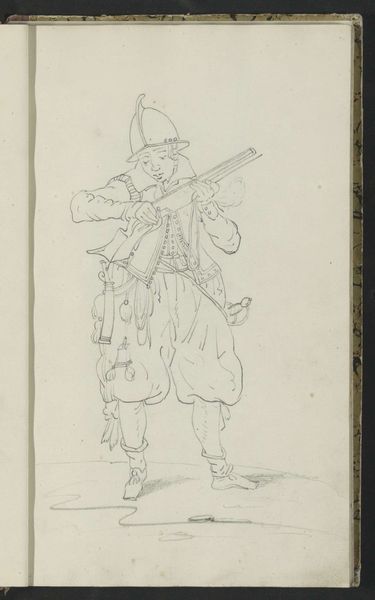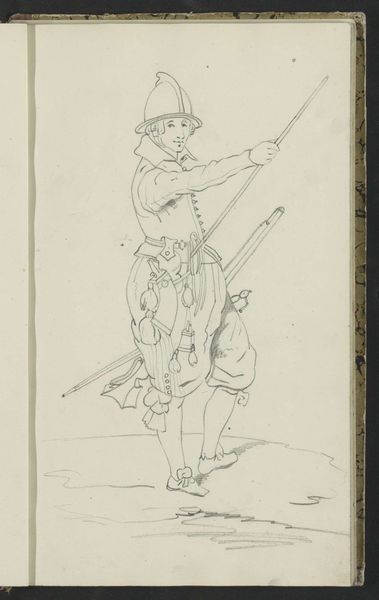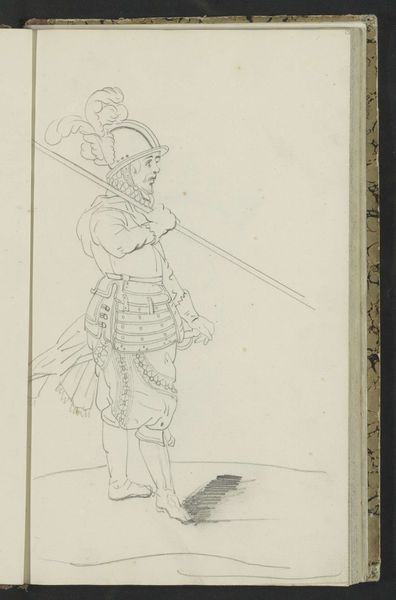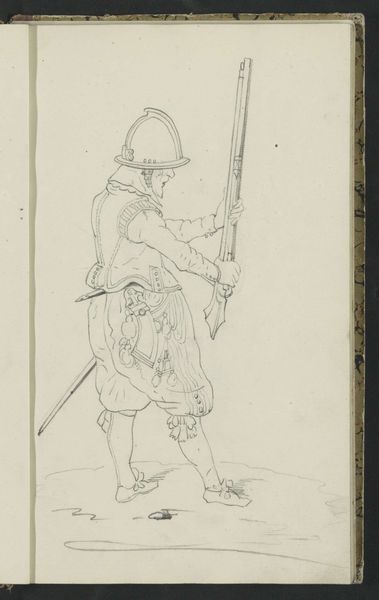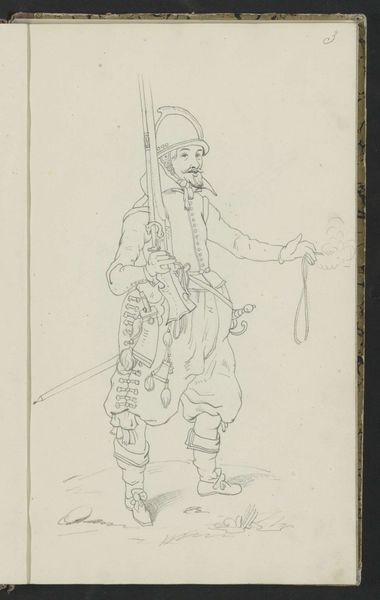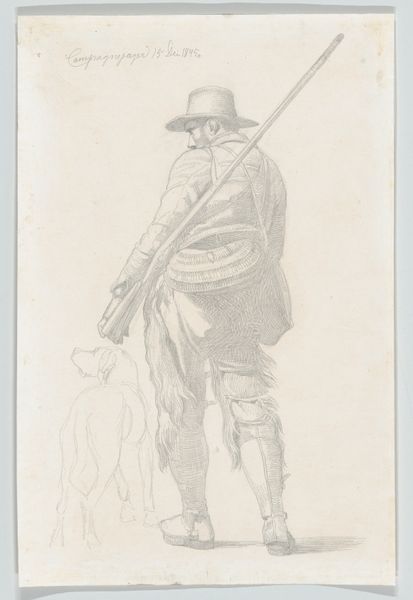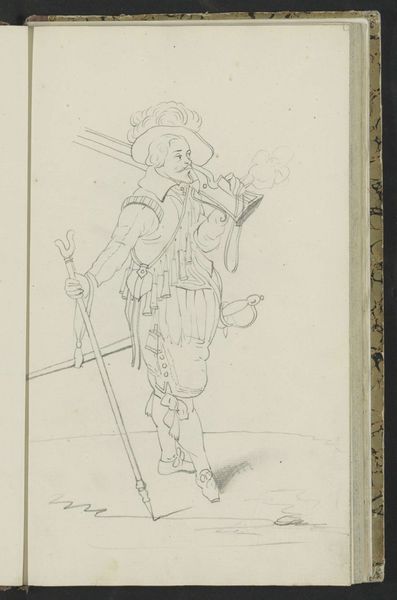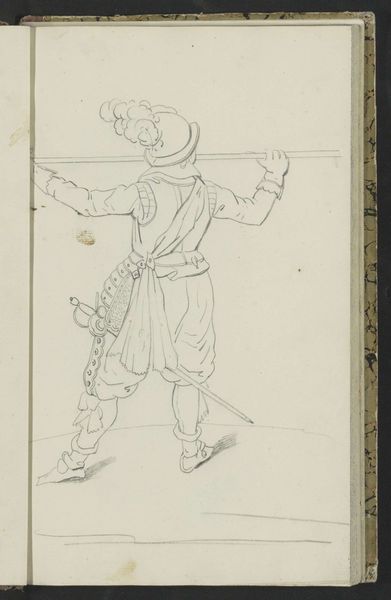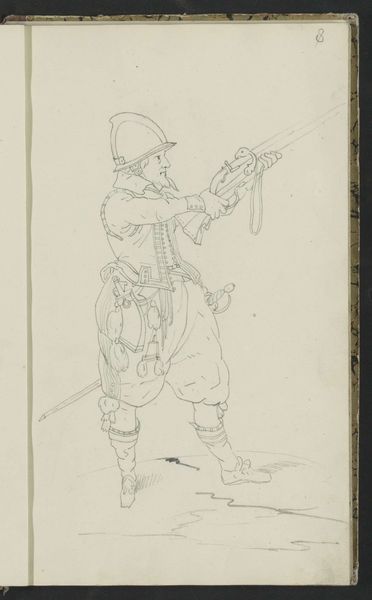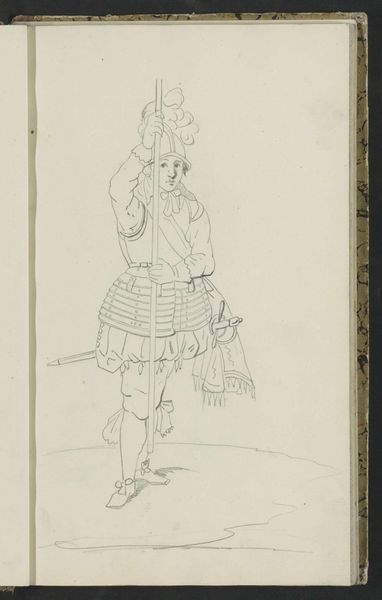
drawing, pencil
#
portrait
#
drawing
#
quirky sketch
#
pen sketch
#
sketch book
#
figuration
#
personal sketchbook
#
sketchwork
#
ink drawing experimentation
#
pen-ink sketch
#
pencil
#
sketchbook drawing
#
storyboard and sketchbook work
#
sketchbook art
Copyright: Rijks Museum: Open Domain
Editor: This sketch by Johannes Antonius Canta, titled "Soldaat die de pan van zijn musket sluit," made sometime between 1826 and 1888, captures my eye because of its raw, almost nonchalant character. The focus seems entirely on the process. What do you find most compelling about it? Curator: What I find intriguing is the visible labor inherent in the drawing itself. We see the hand of the artist, the quick, almost frantic marks made with pencil or pen. Consider this within the context of artistic production. Canta’s sketch offers us a glimpse into the material reality of art making - the tools, the paper, the act of translation from observation to image. Do you think that this method affects how we interpret it? Editor: That’s a very good point. I hadn’t considered that. Now that I know a bit more about the possible medium and materiality of the sketch itself, it certainly adds depth. It seems almost more like documentation, than high art, I suppose? Curator: Exactly. We should look at how Canta engaged with materials accessible to him. This challenges notions of refined artistic skill, highlighting resourcefulness and the potential inherent in everyday objects. How might its social or even political context influence Canta's material choices? Editor: It’s fascinating to consider those aspects because it completely changes the lens through which one might observe and assess the piece. Thanks for your comments. I've never approached a work of art that way before, and will use it to expand my thoughts moving forward. Curator: My pleasure. Approaching art through materials opens many rewarding avenues.
Comments
No comments
Be the first to comment and join the conversation on the ultimate creative platform.
